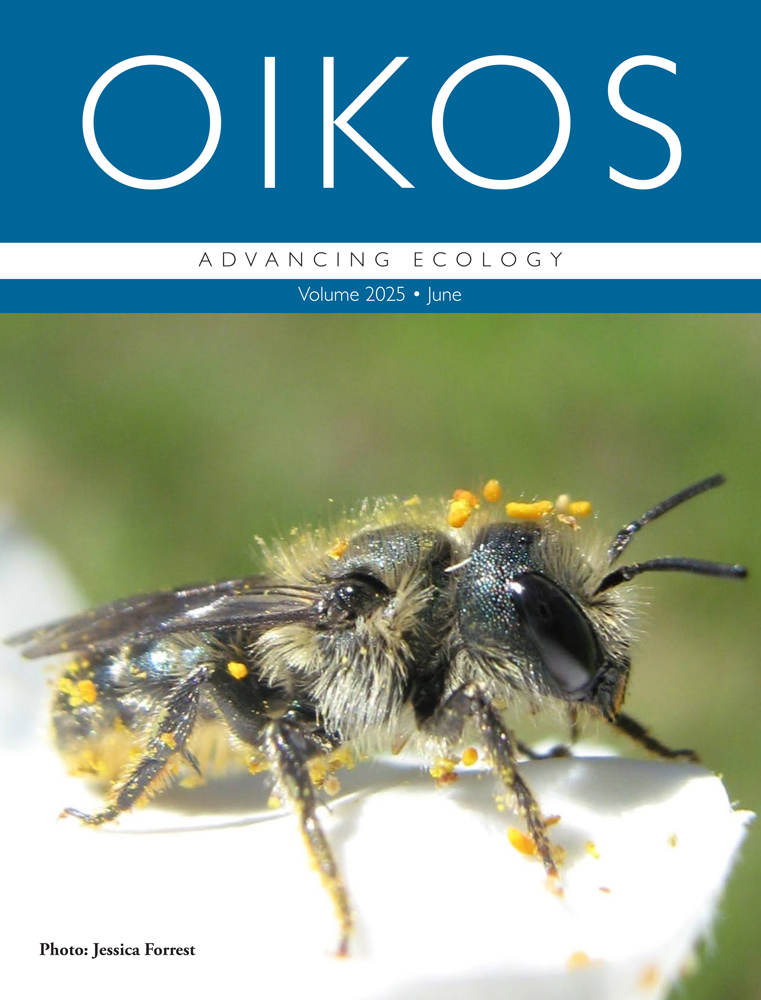Ver ítem
- xmlui.general.dspace_homeCentros Regionales y EEAsCentro Regional Buenos Aires SurEEA Cesareo NaredoArtículos científicosxmlui.ArtifactBrowser.ItemViewer.trail
- Inicio
- Centros Regionales y EEAs
- Centro Regional Buenos Aires Sur
- EEA Cesareo Naredo
- Artículos científicos
- Ver ítem
Shrunk coexistence: cattle exclusion and nutrient addition intensify competition between native and exotic grasses with low phenological overlap
Resumen
Exotic plants are becoming increasingly common worldwide, often driven by ecological factors such as domestic livestock grazing and soil fertilization. In temperate grasslands, native C4 and exotic C3 grasses are generally expected to coexist due to their distinct temporal niches, which should reduce direct competition. However, their differing abilities to exploit limited resources or tolerate vertebrate herbivory can create fitness imbalances, favoring
[ver mas...]
Exotic plants are becoming increasingly common worldwide, often driven by ecological factors such as domestic livestock grazing and soil fertilization. In temperate grasslands, native C4 and exotic C3 grasses are generally expected to coexist due to their distinct temporal niches, which should reduce direct competition. However, their differing abilities to exploit limited resources or tolerate vertebrate herbivory can create fitness imbalances, favoring exotic forage species over native species and potentially undermining their long-term coexistence. Few studies have explored how seasonally distinct groups of native and exotic plants interact, especially under the simultaneous manipulation of biotic factors – such as grazing and species interactions – and abiotic factors – such as soil nutrients. We conducted short- and long-term manipulative experiments in a temperate Pampa grassland in Argentina to investigate how herbivore exclusion, fertilization, and their combination influence plant invasion by altering interactions between native warm-season (C4) and exotic cool-season (C3) grasses. Despite their phenological differences, native C4 and exotic C3 grasses interact, and their interactions were weak under grazing. However, with herbivore exclusion and nutrient addition, interactions shifted towards strong competition, particularly in spring. This competition resulted in a slight increase in exotic grass cover over natives after two years. However, fourteen years after the onset of the long-term herbivore exclusion, exotic grasses, particularly Festuca arundinacea, had become dominant, suggesting potential risks to the coexistence of native and exotic species. Our study uniquely reveals that even when niche differentiation is expected to prevent direct competition, biotic and abiotic changes can trigger interactions that favour exotic species' dominance, challenging assumptions about the stability of coexistence between phenologically distinct grasses.
[Cerrar]

Autor
Silvoso, María Celeste;
Tognetti, Pedro Maximiliano;
Armas, Cristina;
Casanoves, Fernando;
Graff, Barbara Pamela;
Fuente
Oikos : e11211. (First published: 08 June 2025)
Fecha
2025-06
Editorial
Wiley
ISSN
0030-1299
1600-0706
1600-0706
Formato
pdf
Tipo de documento
artículo
Palabras Claves
Derechos de acceso
Restringido
 Excepto donde se diga explicitamente, este item se publica bajo la siguiente descripción: Creative Commons Attribution-NonCommercial-ShareAlike 2.5 Unported (CC BY-NC-SA 2.5)
Excepto donde se diga explicitamente, este item se publica bajo la siguiente descripción: Creative Commons Attribution-NonCommercial-ShareAlike 2.5 Unported (CC BY-NC-SA 2.5)


